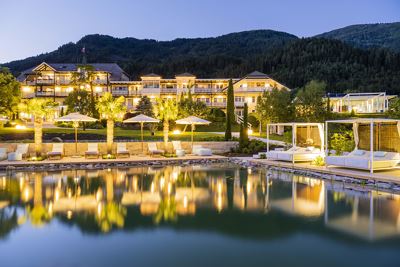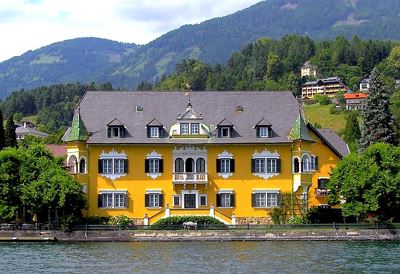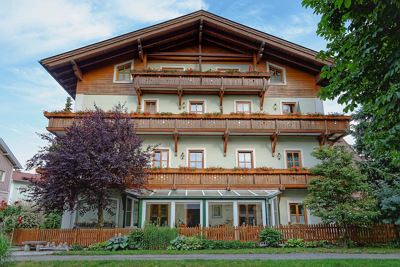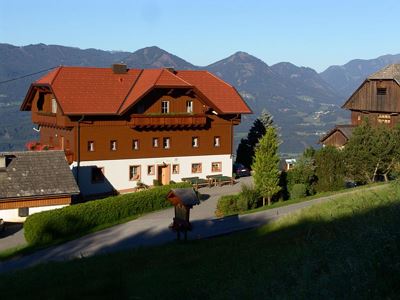SEEGLÜCK Hotel Forelle****S

from€ 171,-per person
The Millstätter See area looks back on an at least 6000-year-old settlement tradition. If you explore the area with open eyes, you will be able to find traces of ancient high cultures, medieval rulers and powerful religious orders. Today, Lake Millstätter See is primarily a Mecca of music and contemporary art. Go on a journey through time to discover 6000 years of cultural history at Lake Millstätter See.
„History thought to be complete would be a strange self-awareness. “
Stone Age, Celts and Romans
The boroughs around the lake hold numerous relics from Celtic and Roman times. Many remains from the earliest settlement era were found in the borough of Seeboden in particular. Among other things, several tools and clay pots have been preserved, as well as bronze vessels from a later time which the early settlers used to make sacrifices to their gods. In addition, several tombs, cloak pins and various other characteristic utensils provide evidence that the Celtic tribe "Ambidravi" (inhabitants of both sides of the Drava) settled here. It is still possible to find numerous "bowl stones" while hiking around the Millstätter See area. These are man-made bowl-like hollows which have been carved into rocks. Archaeology has not yet distinctly identified the exact purpose of these bowl stones, but they are believed to be from the Roman era. Around that time, the Millstätter See area was part of the hinterland of the city Teurnia (today St. Peter in Holz, in the borough of Lendorf).

from€ 171,-per person

from€ 144,-per person

from€ 200,-per unit

from€ 147,50per person

from€ 80,-per person

from€ 126,-per person

from€ 89,-per person

from€ 99,-per person

from€ 99,-per person

from€ 150,-per person

from€ 105,-per person

from€ 125,-per person

from€ 110,-per person

from€ 119,-per person

from€ 96,-per person

from€ 62,-per unit

from€ 49,-per person

from€ 70,-per unit

from€ 62,-per person

from€ 141,-per person

from€ 85,-per person

from€ 79,-per person

from€ 75,-per person

from€ 102,38per person

from€ 79,70per person

from€ 68,-per person

from€ 63,-per person

from€ 48,-per person

from€ 79,40per person

from€ 90,-per unit

from€ 52,-per person

from€ 54,-per person

from€ 53,-per person

from€ 45,-per person

from€ 17,-per person

from€ 26,80per person

from€ 29,40per person

from€ 13,-per person

from€ 14,-per person

from€ 39,-per person

from€ 64,-per person

from€ 45,-per person

from€ 42,-per person

from€ 41,-per person

from€ 32,-per person

from€ 54,50per person

from€ 55,50per person

from€ 80,-per unit

from€ 72,-per unit

from€ 25,-per person

from€ 70,-per unit

from€ 36,25per person

from€ 50,-per person

from€ 99,-per unit

from€ 27,75per person

from€ 30,-per person

from€ 36,25per person

from€ 37,50per person

from€ 85,-per unit

from€ 59,-per person

from€ 36,75per person

from€ 88,-per unit

from€ 50,-per person

from€ 92,-per unit

from€ 110,-per unit

from€ 70,-per unit

from€ 90,-per unit

from€ 60,-per person

from€ 88,-per unit

from€ 42,-per person

from€ 50,-per person

from€ 60,-per person

from€ 50,-per person

from€ 120,-per unit

from€ 55,-per person

from€ 65,-per person

from€ 45,20per person

from€ 57,50per person

from€ 47,-per person

from€ 120,-per unit

from€ 57,-per person

from€ 47,94per person

from€ 32,50per person

from€ 45,-per person

from€ 42,-per person

from€ 45,-per person

from€ 53,-per person

from€ 175,-per unit

from€ 32,-per person

from€ 50,-per person

from€ 28,-per person

from€ 100,-per unit

from€ 44,-per person

from€ 35,-per person

from€ 35,-per person

from€ 50,-per person

from€ 49,-per person

from€ 45,-per person

from€ 36,-per person

from€ 230,-per unit

from€ 150,-per unit

from€ 280,-per person

from€ 875,-per unit

from€ 170,-per unit

from€ 229,-per unit

from€ 180,-per unit

from€ 219,-per unit

from€ 190,-per unit

from€ 100,-per unit

from€ 76,-per person

from€ 135,-per unit

from€ 407,-per unit

from€ 280,-per unit

from€ 336,-per unit

from€ 80,-per unit

from€ 202,-per unit

from€ 130,-per unit

from€ 25,50per person

from€ 165,-per unit

from€ 220,-per unit

from€ 85,-per unit

from€ 60,-per unit

from€ 239,-per unit

from€ 55,-per person

from€ 195,-per unit

from€ 90,-per unit

from€ 192,-per unit

from€ 45,-per person

from€ 202,-per unit

from€ 72,-per unit

from€ 83,-per unit

from€ 160,-per unit

from€ 179,-per unit

from€ 120,-per unit

from€ 87,-per unit

from€ 123,-per unit

from€ 87,-per unit

from€ 115,-per unit

from€ 114,-per unit

from€ 60,-per person

from€ 95,-per unit

from€ 145,-per unit

from€ 99,-per unit

from€ 140,-per unit

from€ 74,-per unit

from€ 125,-per unit

from€ 112,-per unit

from€ 80,-per unit

from€ 205,-per unit

from€ 90,-per unit

from€ 80,-per unit

from€ 54,-per person

from€ 106,-per unit

from€ 60,-per person

from€ 80,-per unit

from€ 95,-per unit

from€ 130,-per unit

from€ 150,-per unit

from€ 80,-per unit

from€ 91,-per unit

from€ 90,-per person

from€ 138,-per unit

from€ 78,-per unit

from€ 78,-per unit

from€ 85,-per unit

from€ 85,-per unit

from€ 357,-per unit

from€ 125,-per unit

from€ 125,-per unit

from€ 85,-per unit

from€ 37,-per person

from€ 117,50per person

from€ 90,-per unit

from€ 100,-per unit

from€ 100,-per unit

from€ 108,-per unit

from€ 100,-per unit
from€ 0

from€ 63,-per unit

from€ 230,-per unit

from€ 120,-per unit

from€ 60,-per unit

from€ 130,-per unit

from€ 120,-per unit

from€ 110,-per unit

from€ 160,-per unit

from€ 52,50per person

from€ 110,-per unit

from€ 53,-per unit

from€ 95,-per unit

from€ 169,-per unit

from€ 90,-per unit

from€ 85,-per unit

from€ 95,-per unit

from€ 91,-per unit

from€ 82,-per unit

from€ 79,-per unit

from€ 100,-per unit

from€ 65,-per unit

from€ 106,-per unit
Pleasewait
Search in progress, please wait…